
Sanibel Island: A Tropical Paradise of Natural Wonders and Relaxation
Discover Sanibel Island, a tropical haven near Fort Myers with pristine beaches, world-class shelling, and abundant wildlife, perfect for relaxation and adventure.
Sanibel Island, located just a short drive from Fort Myers, Florida, is a serene escape renowned for its lush landscapes, pristine beaches, and abundant wildlife. The island's unique east-west orientation makes it a hotspot for shell collecting, attracting enthusiasts from around the world to its shorelines. The J.N. "Ding" Darling National Wildlife Refuge is a must-visit, offering visitors the chance to see exotic birds, alligators, and other wildlife in their natural habitats. Despite its small size, Sanibel Island boasts a variety of activities for visitors. You can bike along more than 25 miles of trails, explore the quaint shops and art galleries in the charming village area, or dine at one of the island's many seafood restaurants, where fresh local catches are always on the menu. The Bailey-Matthews National Shell Museum provides a fascinating look at the island's shelling history and diverse marine life, making it a family-friendly educational stop. For those looking to unwind, the island's laid-back atmosphere and stunning sunsets provide the perfect backdrop for relaxation. Whether you're lounging on the beach, taking a scenic boat tour, or enjoying a spa day, Sanibel Island offers a tranquil retreat from the hustle and bustle of everyday life.
Local tips in Sanibel Island
- Visit the J.N. "Ding" Darling National Wildlife Refuge early in the morning for the best wildlife viewing.
- Bring a bucket and a small shovel for shell collecting; Sanibel Island is one of the best places in the world for shelling.
- Rent a bike to explore the island's extensive network of trails for a more immersive experience.
- Check the tide schedules, as low tide is the best time for shelling.
- Don’t miss the island’s sunset views; they are some of the most breathtaking in Florida.
Sanibel Island: A Tropical Paradise of Natural Wonders and Relaxation
Sanibel Island, located just a short drive from Fort Myers, Florida, is a serene escape renowned for its lush landscapes, pristine beaches, and abundant wildlife. The island's unique east-west orientation makes it a hotspot for shell collecting, attracting enthusiasts from around the world to its shorelines. The J.N. "Ding" Darling National Wildlife Refuge is a must-visit, offering visitors the chance to see exotic birds, alligators, and other wildlife in their natural habitats. Despite its small size, Sanibel Island boasts a variety of activities for visitors. You can bike along more than 25 miles of trails, explore the quaint shops and art galleries in the charming village area, or dine at one of the island's many seafood restaurants, where fresh local catches are always on the menu. The Bailey-Matthews National Shell Museum provides a fascinating look at the island's shelling history and diverse marine life, making it a family-friendly educational stop. For those looking to unwind, the island's laid-back atmosphere and stunning sunsets provide the perfect backdrop for relaxation. Whether you're lounging on the beach, taking a scenic boat tour, or enjoying a spa day, Sanibel Island offers a tranquil retreat from the hustle and bustle of everyday life.
Iconic landmarks you can’t miss
Edison & Ford Winter Estates
Explore the Edison & Ford Winter Estates, where history and nature intertwine in a captivating Floridian setting.

Lighthouse Beach Park
Explore the stunning beaches and historic lighthouse at Lighthouse Beach Park, a perfect getaway on Sanibel Island for nature lovers and families.

Bowman's Beach
Experience the enchanting beauty of Bowman's Beach, where pristine sands meet tranquil waters on Sanibel Island, Florida.

Causeway Islands Park
Experience the natural beauty of Causeway Islands Park, a serene escape on Sanibel Island featuring pristine beaches and stunning Gulf views.

Sanibel Lighthouse
Explore the historic Sanibel Lighthouse, a beautiful landmark on Sanibel Island, perfect for stunning views, rich history, and coastal recreation.

Bailey-Matthews National Shell Museum & Aquarium
Experience the captivating world of shells and marine life at the Bailey-Matthews National Shell Museum & Aquarium in Sanibel, Florida.

Sanibel Historical Museum and Village
Explore the captivating history of Sanibel Island at the Sanibel Historical Museum and Village, where the past comes alive through engaging exhibits and charming architecture.

Sanibel-Captiva Conservation Foundation
Discover the ecological treasures of Sanibel-Captiva Conservation Foundation, where nature meets preservation in Florida's stunning coastal ecosystem.

The Sanibel Captiva Guide
Explore the beauty of Sanibel Captiva, a Florida paradise known for stunning beaches, rich wildlife, and unforgettable outdoor adventures.

Unmissable attractions to see
Lovers Key State Park
Explore Lovers Key State Park, a coastal paradise in Fort Myers Beach, featuring stunning beaches, diverse wildlife, and abundant outdoor activities.

Lighthouse Beach Park
Discover the serene beauty of Lighthouse Beach Park in Sanibel, Florida, where sandy shores meet stunning sunsets and vibrant wildlife awaits.

Adventures in Paradise
Explore the breathtaking waters of Fort Myers with Adventures in Paradise, offering unforgettable boat tours, fishing charters, and scenic adventures.

Causeway Islands Park
Explore the natural beauty of Causeway Islands Park in Sanibel, Florida, where stunning views and outdoor activities await every visitor.
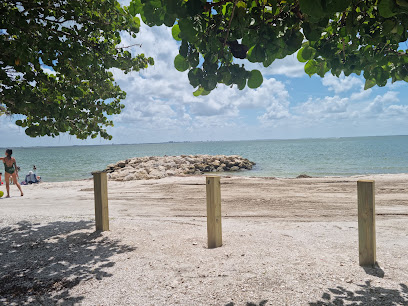
Sanibel Lighthouse
Experience the charm and history of Sanibel Lighthouse, a must-visit coastal landmark offering stunning views and rich maritime heritage.

Gulfside City Park Beach
Discover the serene beauty of Gulfside City Park Beach on Sanibel Island, a perfect destination for relaxation, adventure, and wildlife exploration.
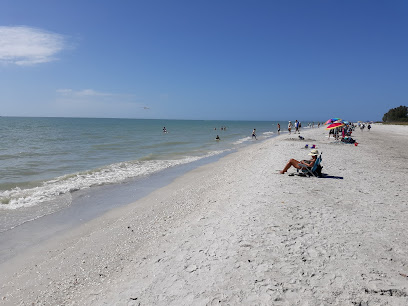
Bailey-Matthews National Shell Museum & Aquarium
Explore the fascinating world of shells and marine life at the Bailey-Matthews National Shell Museum & Aquarium in Sanibel, Florida.

Blind Pass Beach
Experience the breathtaking beauty of Blind Pass Beach, a serene paradise on Sanibel Island known for its soft sands, stunning sunsets, and rich wildlife.

Essential places to dine
The Island Cow
Experience the vibrant flavors of fresh seafood at The Island Cow on Sanibel Island—where every bite celebrates local culinary traditions.

Doc Ford's Rum Bar & Grille
Experience fresh seafood and vibrant atmosphere at Doc Ford's Rum Bar & Grille on Sanibel Island, where coastal charm meets culinary delight.

Gramma Dot's Restaurant
Experience coastal dining at Gramma Dot's Restaurant in Sanibel - where fresh seafood meets stunning marina views.
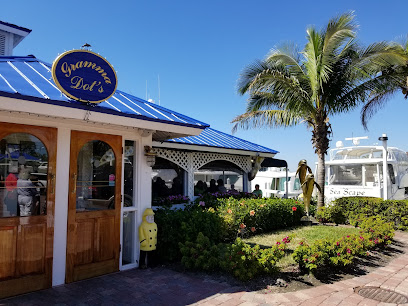
Lazy Flamingo
Discover fresh seafood delights at Lazy Flamingo on Sanibel Island - your gateway to authentic coastal cuisine.

Blue Giraffe Restaurant
Discover the culinary delights of Sanibel at Blue Giraffe Restaurant - where fresh seafood meets hearty breakfast favorites in a vibrant setting.

Tipsy Turtle Restaurant & Bar
Experience vibrant flavors and lively ambiance at Tipsy Turtle Restaurant & Bar in Sanibel Island - your go-to spot for fresh seafood and creative cocktails.

The Mad Hatter Restaurant
Discover The Mad Hatter Restaurant on Sanibel Island – where exquisite New American cuisine meets breathtaking coastal views.

Great White Grill
Discover delicious pizza and bar favorites at Great White Grill on Sanibel Island—where flavor meets relaxation.

Courtside Steakhouse
Experience exceptional steaks and fine dining at Courtside Steakhouse in Sanibel Harbour Resort - a culinary gem for every food lover.

Tarpon House
Experience exquisite American cuisine with breathtaking waterfront views at Tarpon House in Fort Myers.

Markets, malls and hidden boutiques
The Franklin Shops
Explore The Franklin Shops in Fort Myers for unique clothing and local treasures in a charming boutique setting.

Island Gifts
Explore Island Gifts in Sanibel for unique souvenirs and handcrafted treasures that embody the spirit of this beautiful island getaway.

Tuttle's Seahorse Shell Shop
Explore Tuttle's Seahorse Shell Shop for unique seashells and beach-themed gifts, capturing the spirit of Sanibel Island's coastal beauty.

The Village Shops
Explore The Village Shops in Sanibel for a unique shopping experience with upscale boutiques, artisanal crafts, and delightful dining options.

Sporty Seahorse Shop
Explore the Sporty Seahorse Shop in Sanibel for the best beach gear, unique souvenirs, and a delightful ice cream treat!

Bee Lux Gift Boutique
Explore Bee Lux Gift Boutique for unique gifts, custom apparel, and handcrafted jewelry that celebrate local artistry and creativity.

Netta Marie's Store
Explore unique gifts and local craftsmanship at Netta Marie's Store, a charming gift shop and home goods destination for every traveler.

RUMSKULL'S TREASURE TROVE
Explore Rumskull's Treasure Trove for one-of-a-kind souvenirs and local crafts that capture the spirit of your travels.

Royalt Customs Boutique
Explore unique fashion at Royalt Customs Boutique, where personalized service meets stylish apparel for every taste.

RUMSKULL'S TREASURE TROVE LLC
Explore Rumskull's Treasure Trove for unique gifts and local treasures that capture the spirit of your travels.

Essential bars & hidden hideouts
Doc Ford's Rum Bar & Grille
Discover the flavors of Sanibel Island at Doc Ford's Rum Bar & Grille, where fresh seafood meets a vibrant island atmosphere for an unforgettable dining experience.
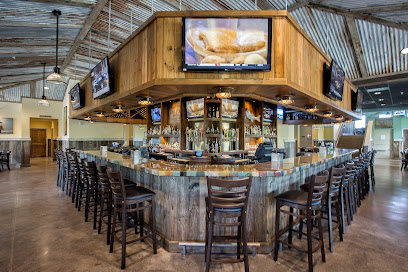
Gramma Dot's Restaurant
Experience a taste of Florida at Gramma Dot's Restaurant, where fresh seafood meets charming island ambiance.

Lazy Flamingo
Discover the flavors of the sea at Lazy Flamingo, Sanibel's premier seafood restaurant, known for its fresh catches and casual island atmosphere.

The Sandbar & Grille
Experience the ultimate Florida dining at The Sandbar & Grille with delicious American dishes and a vibrant atmosphere perfect for families and friends.

Tipsy Turtle Restaurant & Bar
Discover the vibrant dining experience at Tipsy Turtle Restaurant & Bar on Sanibel Island, featuring fresh seafood and a lively atmosphere.
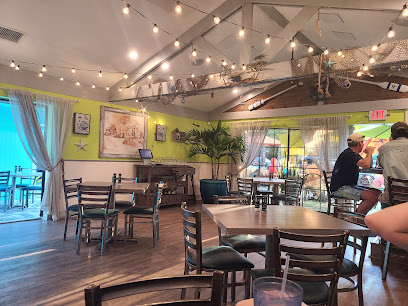
Traders Restaurant on Sanibel
Experience exquisite seafood and fine dining at Traders Restaurant on Sanibel, where culinary excellence meets a vibrant atmosphere.

Sanibel Grill
Experience the best of Sanibel's coastal cuisine at Sanibel Grill, where fresh seafood meets a lively sports bar atmosphere.

Turtle’s Tiki Bar
Discover the tropical charm of Turtle’s Tiki Bar, where delicious grilled delights meet breathtaking beach views on Sanibel Island.

Island Time
Experience the essence of Sanibel Island at Island Time, where craft cocktails and delicious grill dishes meet stunning Gulf views.

Breezers Pool Bar
Experience the ultimate relaxation at Breezers Pool Bar, where tropical drinks and a serene atmosphere await you in Sanibel, Florida.

Local Phrases
-
- HelloHi there
[hai dher] - GoodbyeSee ya
[see ya] - YesYeah
[yeh] - NoNah
[nah] - Please/You're welcomePlease/No worries
[pleez/no wuhr-eez] - Thank youThanks a lot
[thanks uh laht] - Excuse me/SorryPardon me/My bad
[pahr-duhn mee/my bad] - How are you?How's it goin'?
[hows it goin] - Fine. And you?Good. And you?
[good and you] - Do you speak English?Speak English?
[speek ing-glish] - I don't understandI don't get it
[ai dont get it]
- HelloHi there
-
- I'd like to see the menu, pleaseCan I check the menu?
[kan ai chek thu menu] - I don't eat meatI'm vegetarian
[aim vuh-jai-teer-ee-uhn] - Cheers!Cheers!
[cheers] - I would like to pay, pleaseI'll pay now
[ai-l pay now]
- I'd like to see the menu, pleaseCan I check the menu?
-
- Help!Help!
[help] - Go away!Leave me alone!
[leave mee alone] - Call the Police!Call the Cops!
[call the cops] - Call a doctor!Get a doctor!
[get a doctor] - I'm lostI'm lost
[aim lost] - I'm illI'm sick
[aim sik]
- Help!Help!
-
- I'd like to buy...I wanna buy...
[ai wahn-uh buy] - I'm just lookingJust browsing
[just br-ow-zing] - How much is it?How much?
[how much] - That's too expensiveThat's too much
[thats too much] - Can you lower the price?Can you give a discount?
[can yuh give a diss-count]
- I'd like to buy...I wanna buy...
-
- What time is it?What's the time?
[whats thu time] - It's one o'clockIt's one
[its one] - Half past (10)Half ten
[half ten] - MorningMorning
[morning] - AfternoonAfternoon
[afternoon] - EveningEvening
[evening] - YesterdayYesterday
[yesterday] - TodayToday
[today] - TomorrowTomorrow
[tomorrow] - 1One
[wuhn] - 2Two
[too] - 3Three
[three] - 4Four
[for] - 5Five
[fahyv] - 6Six
[siks] - 7Seven
[sev-uhn] - 8Eight
[ayt] - 9Nine
[nahn] - 10Ten
[ten]
- What time is it?What's the time?
-
- Where's a/the...?Where's the...?
[wheres the] - What's the address?What's the address?
[whats the address] - Can you show me (on the map)?Can you show me (on the map)?
[can yuh show me] - When's the next (bus)?When's the next (bus)?
[whens the next bus] - A ticket (to ....)A ticket (to ....)
[a ticket to]
- Where's a/the...?Where's the...?
History of Sanibel Island
-
Before European settlement, Sanibel Island was home to the Calusa Indians, a powerful Native American tribe known for their complex society and impressive shell mounds. The Calusa thrived in the region, relying on the rich coastal resources for fishing and trade, and their influence shaped the area long before the arrival of settlers.
-
In the 16th century, Spanish explorers, including Ponce de León, arrived in the region, marking the beginning of European interest in Florida. However, it wasn't until the mid-19th century that Sanibel Island saw significant settlement, with its first permanent residents arriving around the 1860s. The island's isolation and unique ecosystems attracted those seeking a quieter lifestyle.
-
In 1884, the Sanibel Island Lighthouse was constructed to aid navigation for ships traveling along the Gulf Coast. The lighthouse became a symbol of Sanibel and played a crucial role in the area's maritime history, guiding vessels safely to shore while also fostering the growth of local trade and tourism.
-
In the 20th century, Sanibel Island became a focal point for conservation efforts, particularly as development began to encroach upon its natural habitats. The Sanibel-Captiva Conservation Foundation was established in 1967, leading initiatives to protect the island's unique ecosystems and promote sustainable practices, which remain vital to the island's identity.
-
As awareness of its natural beauty grew, Sanibel Island developed into a popular tourist destination in the late 20th century. The island is renowned for its shelling beaches, wildlife refuges, and eco-tourism activities, drawing visitors from around the globe. The blend of cultural influences from its indigenous roots, early settlers, and modern conservation efforts has created a unique community that values both its heritage and the environment.
Sanibel Island Essentials
-
Sanibel Island is accessible via the Sanibel Causeway, which connects it to Fort Myers. From Fort Myers, you can reach Sanibel Island by car, taxi, or rideshare services like Uber and Lyft. The drive typically takes about 30 minutes, depending on traffic. If you're coming from Southwest Florida International Airport (RSW), consider renting a car or taking a taxi, as public transport options are limited.
-
Sanibel Island is best navigated by bicycle, as the island has an extensive network of bike paths. Several bike rental shops are available on the island. There are also limited local shuttle services that provide transportation to major attractions. Walking is a pleasant option for visiting nearby destinations, but be mindful of the island's heat and humidity.
-
Sanibel Island is generally a safe destination for tourists. However, it's important to remain vigilant, especially in less populated areas during evening hours. Avoid leaving valuables in your car, as petty theft can occur in tourist hotspots. There are no specific high-crime areas targeting tourists, but standard safety precautions should always be observed.
-
In case of an emergency, dial 911 for medical, fire, or police assistance. The local hospital is the Sanibel Health Center, and there are several urgent care facilities on the island. Familiarize yourself with the location of the nearest pharmacy for over-the-counter medications. Always have travel insurance that covers emergencies.
-
Fashion: Do wear light, casual clothing suitable for the beach and warm weather. Don't wear overly formal attire except for upscale dining. Religion: Do respect local customs, especially in religious places. Public Transport: Do be courteous to others when using shuttle services. Don't use your phone loudly in public transport. Greetings: Do greet locals with a friendly smile; a wave is common. Eating & Drinking: Do enjoy local seafood and try the key lime pie. Don't eat on public transport or litter on the beach.
-
To experience Sanibel Island like a local, visit the Sanibel Farmers Market for fresh produce and local crafts. Explore the less crowded beaches like Bowman’s Beach for a more tranquil experience. Consider joining a guided nature tour to learn about the island's unique ecology. Don't miss the chance to collect seashells, as Sanibel is famous for its diverse shell collection opportunities.
Nearby Cities to Sanibel Island
-
Things To Do in Fort Myers
-
Things To Do in Sarasota
-
Things To Do in Sebring
-
Things To Do in St. Petersburg
-
Things To Do in Tampa
-
Things To Do in Clearwater
-
Things To Do in Homestead
-
Things To Do in Fort Lauderdale
-
Things To Do in Stuart
-
Things To Do in Miami
-
Things To Do in Ft. Pierce
-
Things To Do in Key West
-
Things To Do in Key Largo
-
Things To Do in Orlando
-
Things To Do in Bimini













